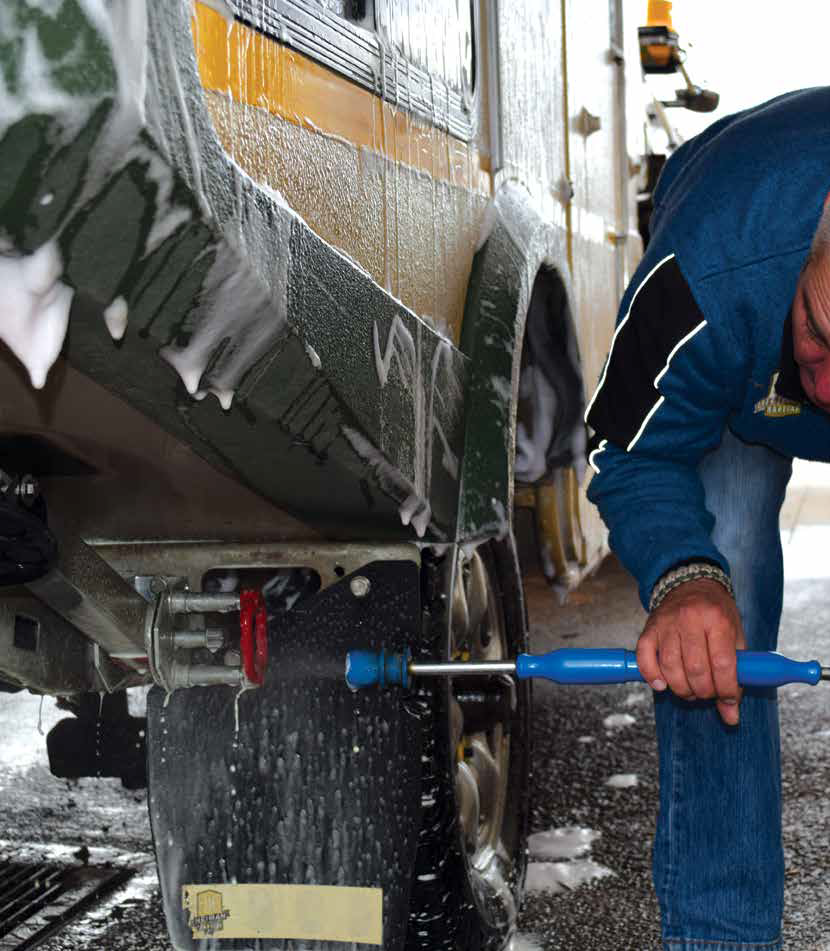
A thorough clean is important
As Dorothy from The Wizard of Oz observed, “There’s no place like home.” The same is true of your RV. But, while it may offer a comfy nest while you’re on the road, when you get back home, it can be equally appealing to a bunch of uninvited organisms who’ll happily take up squatter’s rights while you’re not looking.
Most of us buy our RVs with the aim of reducing the hassle of packing and unpacking for a trip away. But no one ever promised that our homes away from home were a ‘set and forget’ asset. Much as we need to maintain a regular servicing regime to keep us rolling, we also need to put some elbow grease in to store our rigs properly between trips. If we don’t, we may find that our ‘she’ll be right attitude’ comes back to bite us next time we hitch-up.
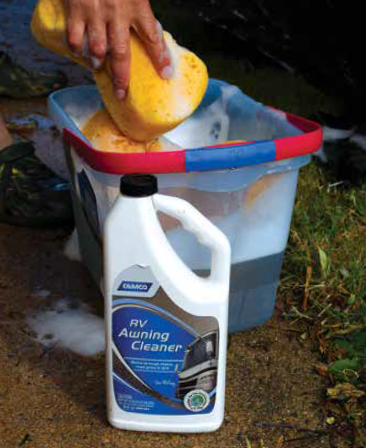
It’s not just the laundry that needs cleaning
FROM LITTLE THINGS, BIG THINGS GROW
Like rust, mould is the enemy of our RVs. Travelling through the air, mould spores thrive on moisture and will find a happy home on our rig’s dark, damp surfaces.
Most of us know to store our RVs dry. This means that, if we’ve packed up in the rain on our last morning in the outdoors, we need to erect everything all over again when we get home. Otherwise, we’ll be facing a major task of mould-cleaning and resealing in a few weeks’ time. Leave it too long and the repair bill will make your eyes water.
And it’s not just downpours that we need to be conscious of. If you live in a high-humidity area, you need to air-out your RV. Otherwise, mould will form while the rig’s simply sitting idle in the backyard. The first whiff of a problem might be the putrid scent of reproducing fungal spores the next time you pop your head inside the rig to start packing for your next trip away. And no one wants pneumonia from breathing that in.

Bombs away when you get home
In a similar vein, we need to habitually clean our RVs — inside and out — when we get back to base. Empty the cupboards, and poke around in the nooks and crannies. Trust me, chances are you’ll find a wet towel or some perishable food items that, if left to fester, will create a smell that will outlast cockroaches.
Examining our RVs this way is also a great way to catch problems before they become catastrophes. Watch out for tell-tale signs of mould on walls, ceilings, bedding or floor coverings. Check the crevices that escape your attention day-today. The dark or white stains and the musty smells will tell you that something’s not right. Whether it’s a leaking roof or dodgy plumbing, there’s a problem that needs your attention.
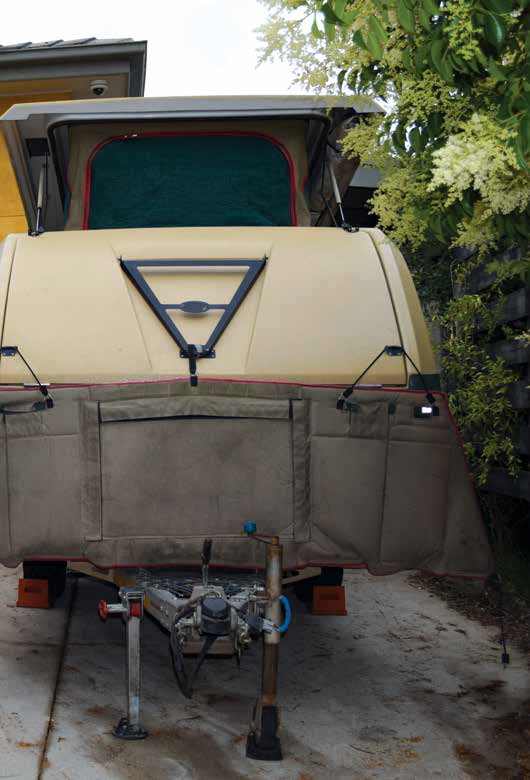
After unpacking, let your camper breathe and dry out
YOU DIRTY RAT
It’s not just the damp spots that you have to worry about. Rats and mice like nice, dry, undisturbed areas to nest. And your RV may be an attractive option. We’ve seen rats nest in air conditioner tubing, under seats and in the engine bay.
It’s not so much the native species like hopping mice that will cause trouble. Instead, be on the watch for introduced pests like the house mouse, brown rat and black rat. Whether they hitch-hiked when you passed through an agricultural area some 1000km away or found refuge in your RV from the neighbour’s cat, they can make an ungodly mess.
They’ll happily gnaw on your wiring, burrow through your mattresses and nibble in your pantry if you leave it stocked. Apart from the obvious damage caused by these vermin, their faeces can harbour nasty diseases like hantavirus, salmonella and leptospirosis. The key to prevention is to ensure that you close all your doors and hatches tightly. Leave a couple of mouse and rat traps or repellent around your camper and keep an eye open for droppings. A rat will produce up to 50 half-inch droppings a day, while a mouse can push out a whopping 100 rice-sized pellets.
Keep a watchful eye for cane toads too. These warty aliens have been recorded hitching rides to destinations as far south as Melbourne. And while this unwelcome guest may not survive to establish a flourishing new population in Victoria, it’s poisonous to your pooch.
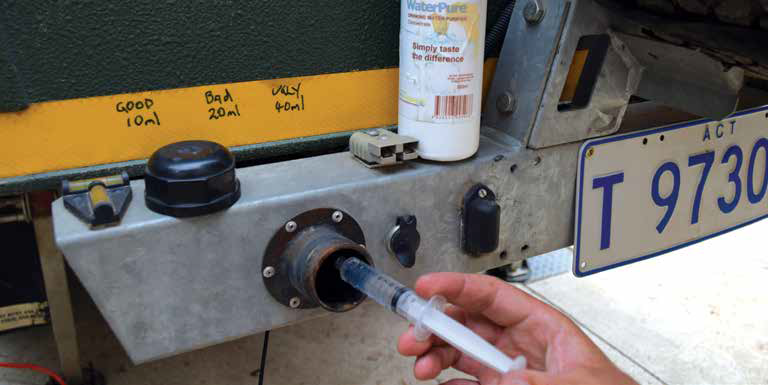
Treat all water you put in the tank to keep gunge at bay
ONE BY ONE
Have you noticed that ants start climbing walls when the weather forecast predicts rain? Take a closer look. Are they carrying their eggs? If so, they’re looking for a drier place to build a colony and ‘deserted’ RVs can become an easy choice.
This potential problem is easy to fix. First, park your rig on a clean, flat bare earth or cemented area. Don’t park under a tree and don’t let tree branches touch any part of your rig. Now, add any of the following deterrents to your camper’s self-defence arsenal:
• Put natural deterrents in your cupboards and tucker boxes such as strongly scented herbs, cinnamon sticks, tea tree oil or peppermint oil. This also works for mice. In fact, if you have the option, park your rig near your kitchen herb garden for added effect. And make your own herb-based repellent to use next time you’re on the road.
• Sprinkle baby powder or ash around your tyres, jockey wheel and stabilisers. Ants hate it and won’t walk over it.
• Coat the same parts with a chemically enhanced long-life surface spray or ant sand.
• When your RV’s open and airing, let-off an insect bomb to kill any hitchhikers that don’t belong in your RV (nor your home turf for that matter)
• Leave your RV as clean as Mary Poppins would like it. Food scraps encourage occupation and infestation. Try wiping down surfaces with white vinegar instead of disinfectant. Ants hate the smell.
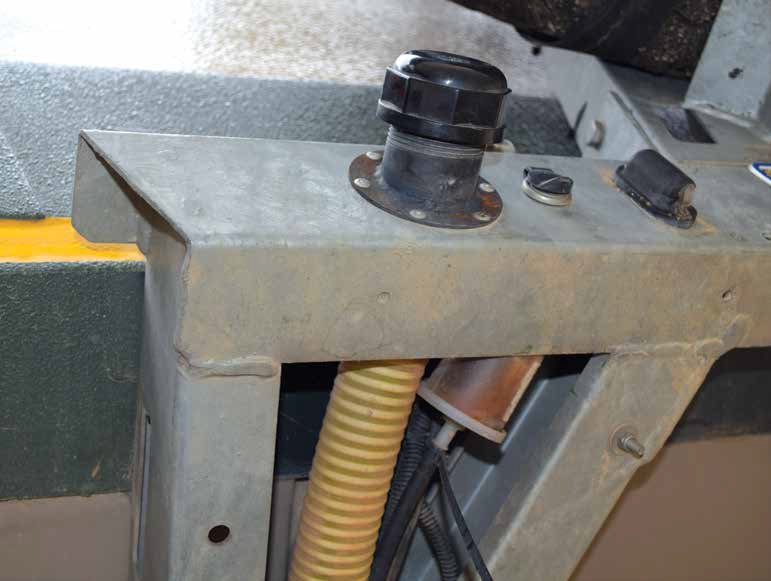
Is it best to leave tanks empty or full?
Whatever you do, recognise that ants and other ‘pests’ can play a vital role in nature when in the right place. For example, try not to ‘declare war’ on ants while you’re travelling. After all, as David Suzuki once said, “If all humans disappeared today, the earth would start improving tomorrow. If all the ants disappeared today, the earth would start dying tomorrow.” So, remember that some chemical-based deterrents can destroy an entire ant colony.
THE NAGGING ISSUE
We’ve all come back from trips with lists of fix its that we know we need to deal with when we get home. But we don’t. Other priorities take hold. It’s the same with servicing. We know we should be getting our rig’s looked-at every 10,000km. But we don’t.
The best time to service the camper is either right after we get home, or directly before we head out again. Which approach you choose depends on how your mind works. The important thing is to do it.
Some repairs, however, should be dealt with right away, while they’re fresh in our minds, like fixing the tear in the flyscreen, shade mesh, awning or door seal. Don’t put it off. Otherwise, the next time you remember will be when you’re dealing with a camper full of road dust or facing a cloud of mozzies in your sleeping space, hundreds of kilometres from home or the nearest repair workshop.
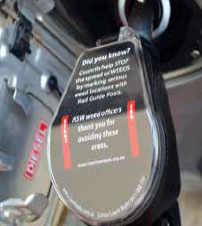
Have you seen these advertised at the bowser?
EMPTY OR FULL?
It’s an age-old question. Do I leave my water tanks and jerries full, or empty?
There are two trains of thought and the arguments won’t stop until the earth itself stops spinning. The theories are that: (1) by eliminating air and sunlight from the tank, ‘nasties’ such as mould, bacteria and algae aren’t able to grow. In which case, there’s no harm in leaving the tanks full. Alternatively: (2) by emptying your tanks and jerries you avoid such microbial growth in the first place.
There’s a problem with both scenarios. Specifically, if your tanks are left full, air will still come in via your breather. This means that the anaerobic process that supports the growth of mould, etc. will continue despite your best efforts. Alternatively, your vessels will never be completely empty, no matter how hard you try. There’ll always be a smidge left at the bottom. Add a little natural humidity and you’ll grow a microcosm of bacteria anyway.
So, pick an approach and stick to it. By paying attention to the issue in the first place, you’re off to a good start. Add an air filter to your breather so you can filter and treat your water as it goes in. And if you’re really worried, add a tank sanitiser to your tanks, flush them out, re-fill using a filter and water treatment and start again.

Treating your water is good insurance
Category: Features
Written: Thu 01 Jul 2021
Printed: July, 2021
Published By: